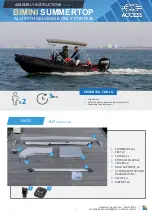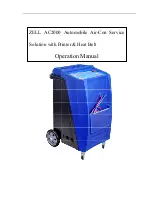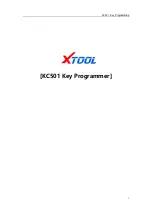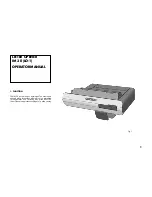
Basic Safety Instructions
2.5 Hazardous
Substances
WARNING !
The operating company bears the responsibility for the use of the laboratory
vacuum system.
Hazardous and harmful substances must be effectively prevented from escaping!
Ensure that all lines and connections are leak tight.
Handle exhaust gases in accordance with the requirements of the emission protection regu-
lations.
Do not operate the laboratory vacuum system without a separator. The separator can only
be emptied after the apparatus has been vented.
Dispose the condensate in an environmentally compatible manner!
The emission condenser has a safety valve. The air evacuation duct with hose must be kept
clear and lead into a suitable air evacuation duct. Throttling the air evacuation duct can da-
mage the valves of the diaphragm pump.
Hazardous substances in the gases to be pumped can cause personal injuries and property
damage. Pay attention to the warning notices for handling hazardous substances.
The local regulations apply in foreign countries.
Combustible Gases
The user must assess the process in accordance with Directive 1999/92/EC (ATEX 137) for
the extraction of explosive gas/air mixtures inside or outside a similar environment. In accor-
dance with the requirements indicated by this assessment, a suitable device must be se-
lected which fulfils the specifications of Directive 94/9/EC (ATEX 95).
Aggressive gases
The diaphragm pump used is highly resistant to chemicals. In the case of particularly ag-
gressive gases or products, the materials used for the pump parts in contact with gas must
be assessed
(as described in chapter 3.1.2).
Poisonous gases
Use a separator when pumping poisonous or harmful gases. Prevent such substances from
leaking out of the appliance or pump. Treat these substances according to the applicable
environmental protection regulations.
The diaphragm pump, control valves and hose lines can be damaged by poisonous or ag-
gressive gases.
Test the strength and leak-tightness of the connecting lines and the connected apparatus.
Prevent environmental poisons, e.g. mercury, getting into the diaphragm pumps.
Fulfil the requirements, for example:
•
German Hazardous Substances Regulation (GefStoffV) of 23. December 2004
•
Regulations 2006/121/EC (classification, packaging and identification of hazardous
substances),
•
Manufacturer's safety data sheets on hazardous substances.
113184
9










































